




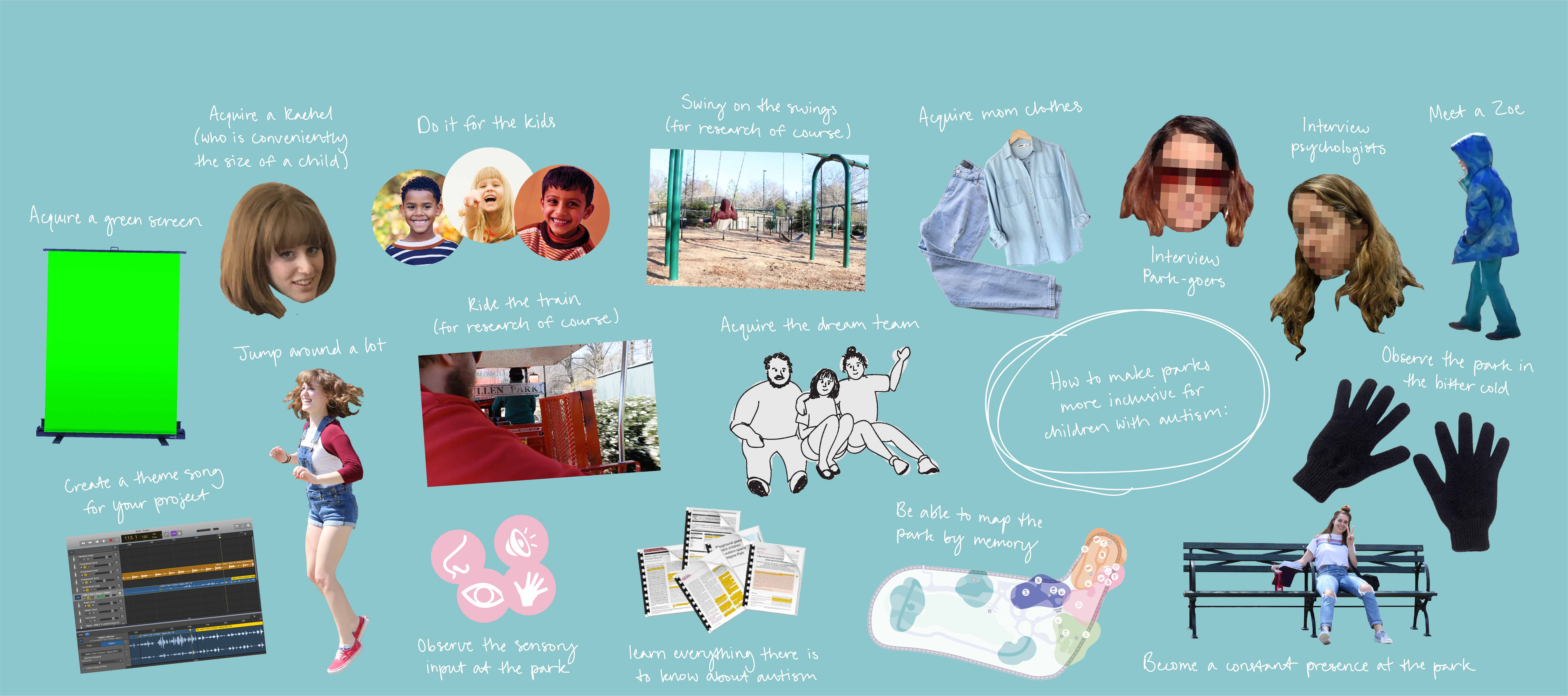
Spring 2018
inclusive
wayfinding
visual branding
videography
Kennedy Liggett
Joseph Rogers
Rachel Thomas
Observe a space in Raleigh, NC and identify a problem. Then create and propose a design intervention for the problem.
Public parks are instrumental to a child’s development, but for children with autism, parks can be unpredictable, frightening places. Children with autism tend to have sensory differences, making the unexpected sounds, smells, and general sensory overload of a park extremely overwhelming.
BOOOOP is an interactive mapping system that prepares autistic children for the unexpected sensory input at Pullen Park. It allows children to build exposure to the sounds at Pullen Park, minimizing the chances that their reaction will be negative when they hear the sound in context.

We began by choosing to observe Pullen Park (a public park in Raleigh, NC). During our observations, we noted the environment and how people behaved in the space.
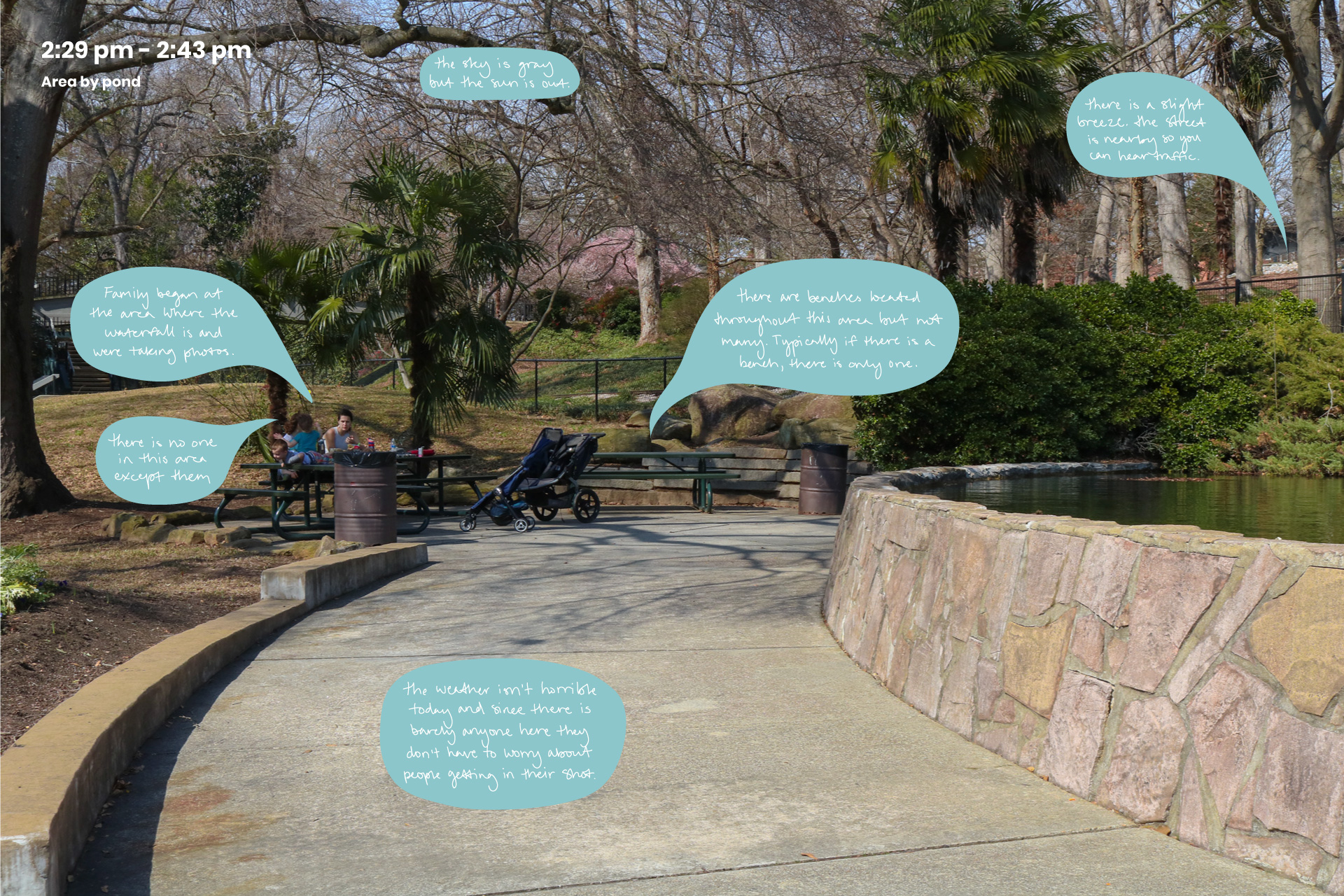
We were unable to identify a genuine problem from our observations, so we decided to conduct interviews at the park to see if a first-time visitor’s experience varied from a returning one. We hypothesized that the park didn’t advertise itself well, so first-time visitors would be unaware of all the features the park had to offer.

While conducting our interviews, we met a girl named Zoe who had autism. I knew nothing about autism prior to meeting Zoe, but after talking to her and her dad, we realized how overwhelming parks can be for children with autism. From that moment, the direction of our project changed completely and we became devoted to figuring out how we could make parks more inclusive for children like Zoe.
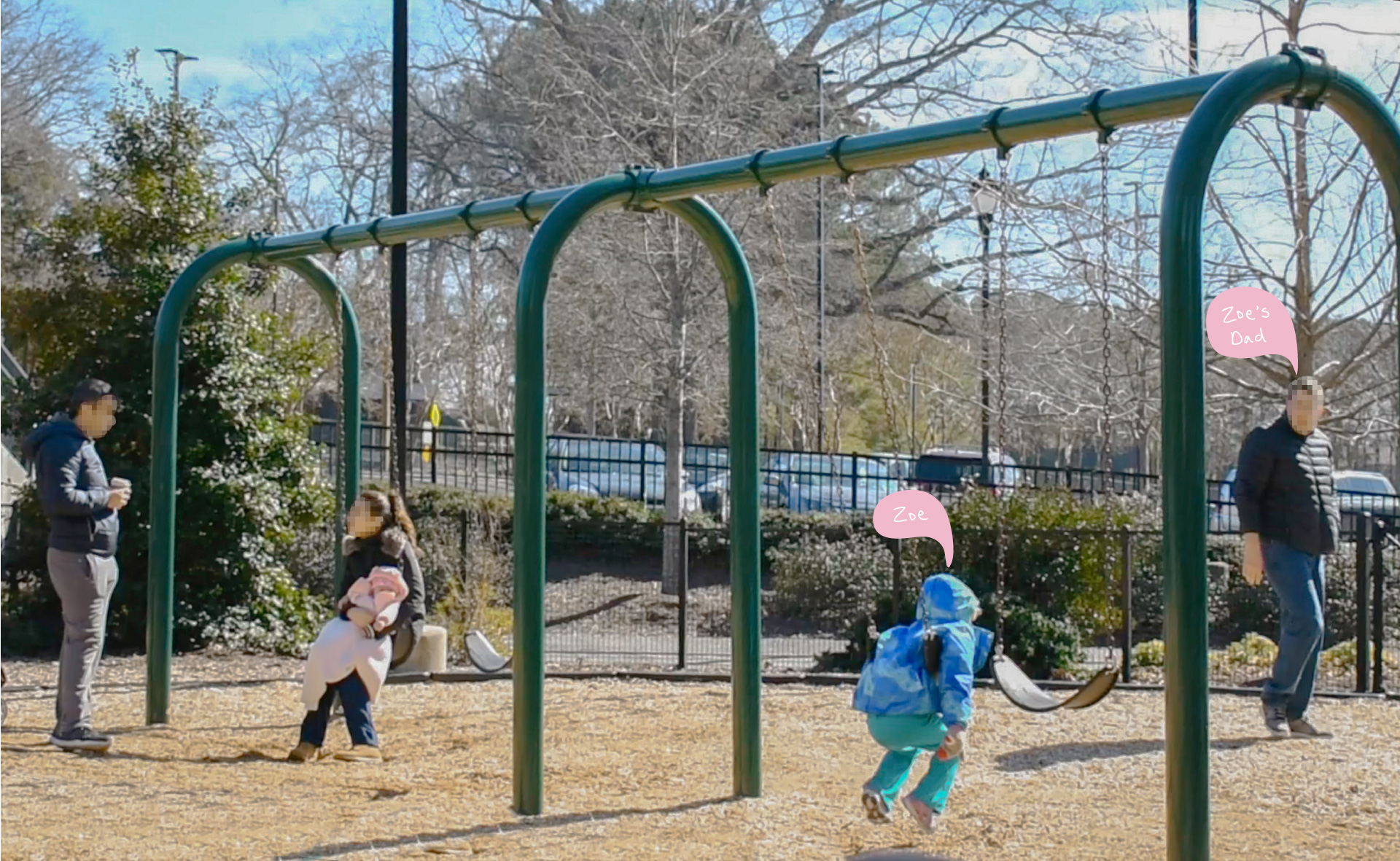
We began researching autism and how spaces can be designed for children with autism. We also interviewed a psychologist at NC State’s Disabilities Offices and a predoctoral psychology intern, both of whom had experience working with children with autism.
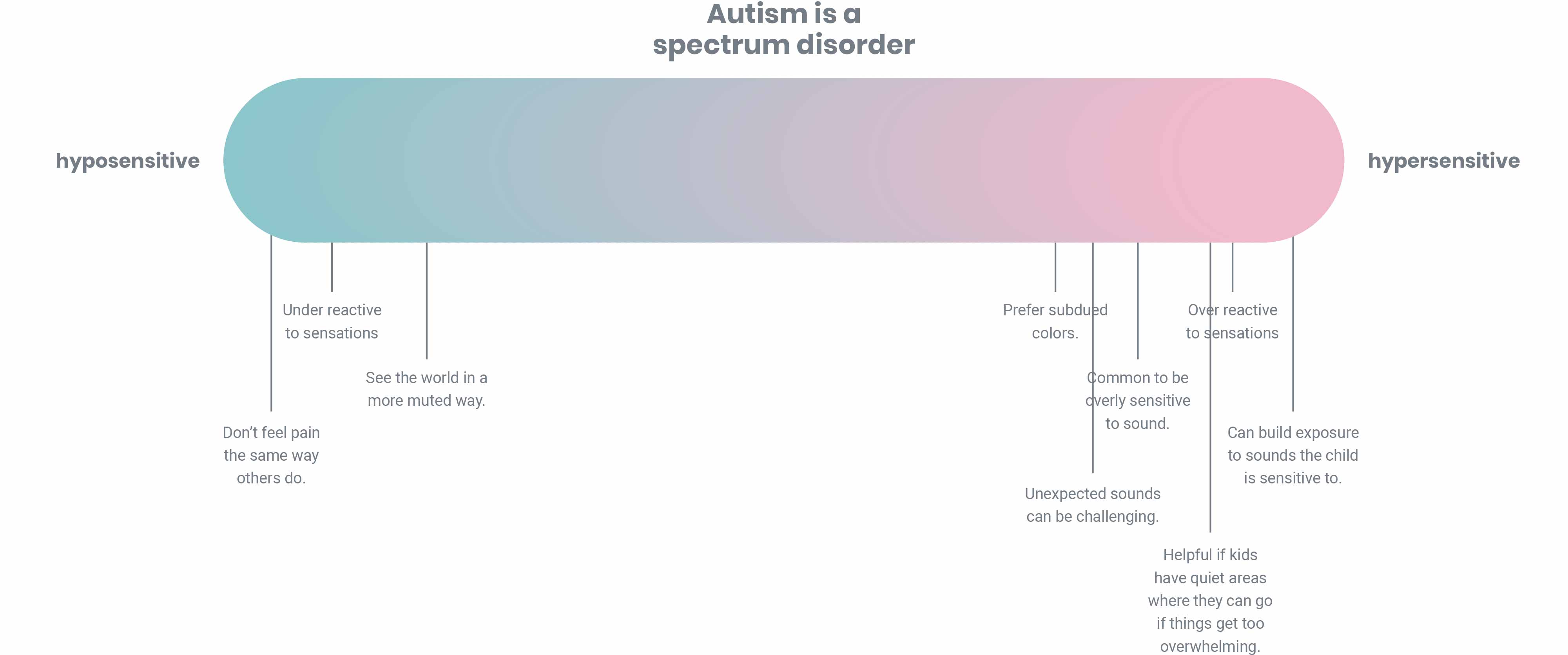
From our research, we found there are seven sensory inputs a child processes: vestibular (coordination), proprioceptive (body awareness), auditory, gustatory (taste), olfactory (smell), tactile, and visual. To determine the sensory qualities of Pullen Park, I went back to the park and classified its features according to these sensory inputs.
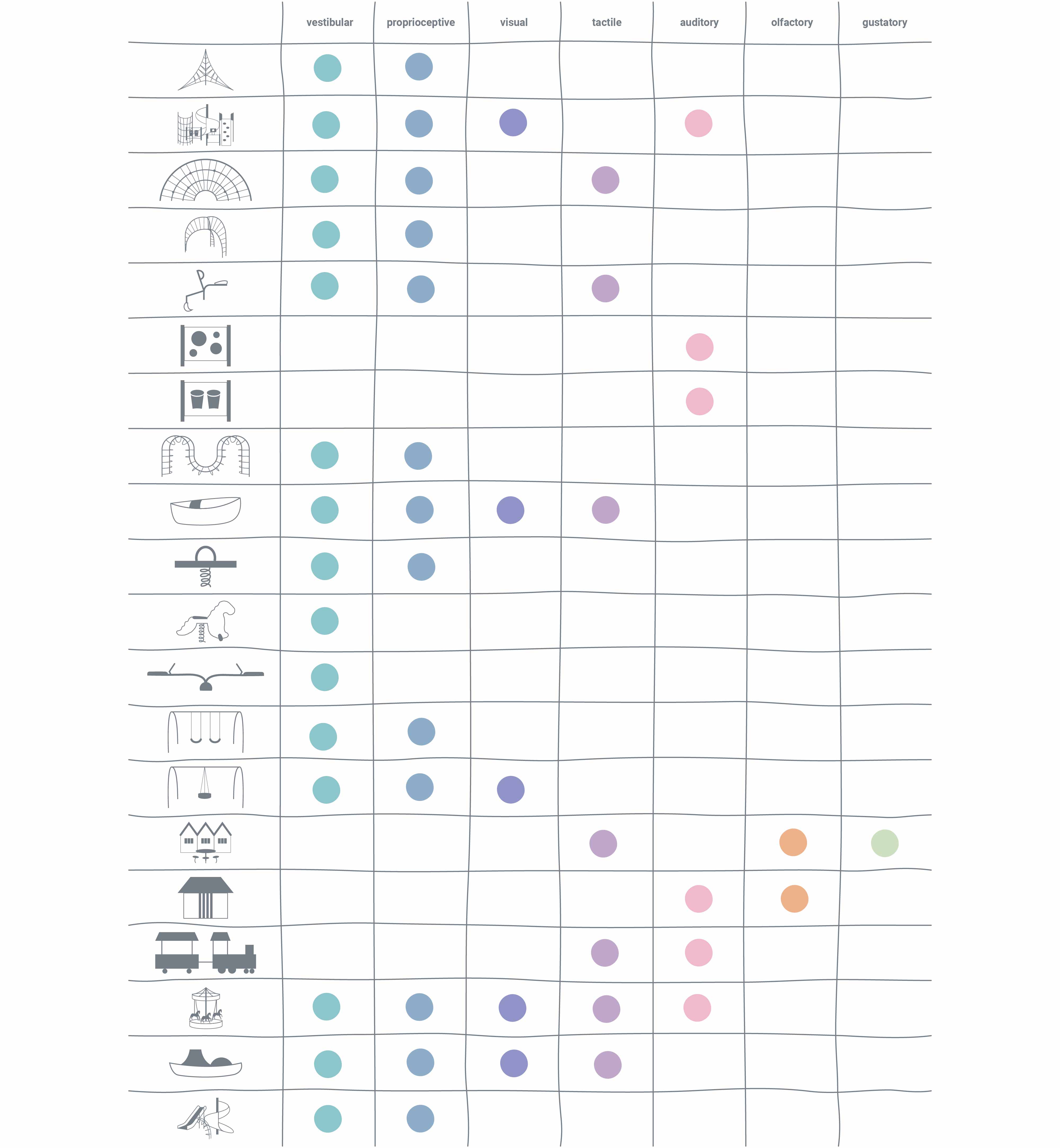
From my findings, I created a map of Pullen Park, highlighting which areas of the park elicited which sensory inputs. From this map, I was able to determine which areas of the park a child with autism would find most overwhelming.
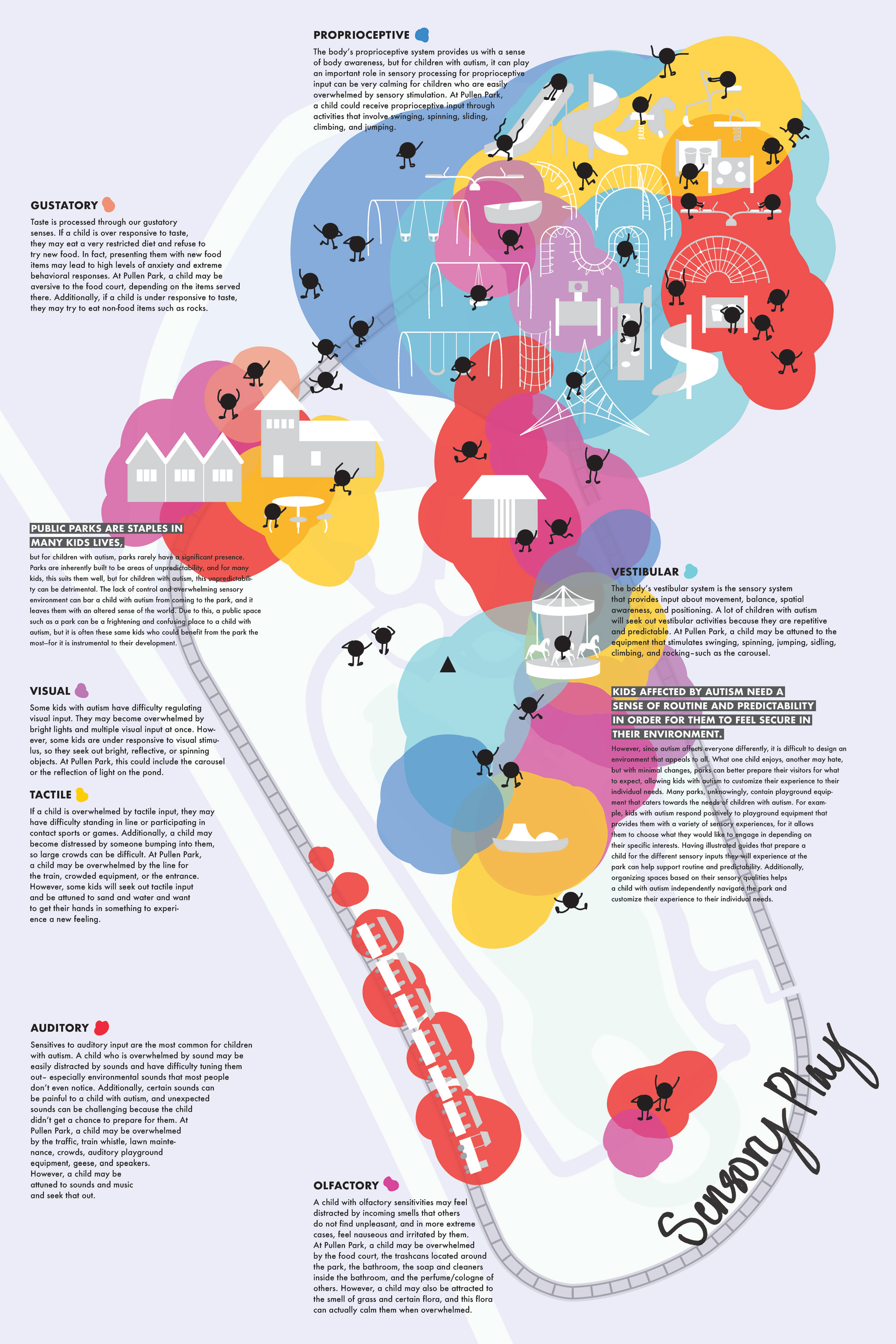
Children with autism are most sensitive to auditory input, so we wanted to design a solution that allowed children to familiarize themselves with the sounds at Pullen Park. To do so, we returned to the park and noted every sound we heard.
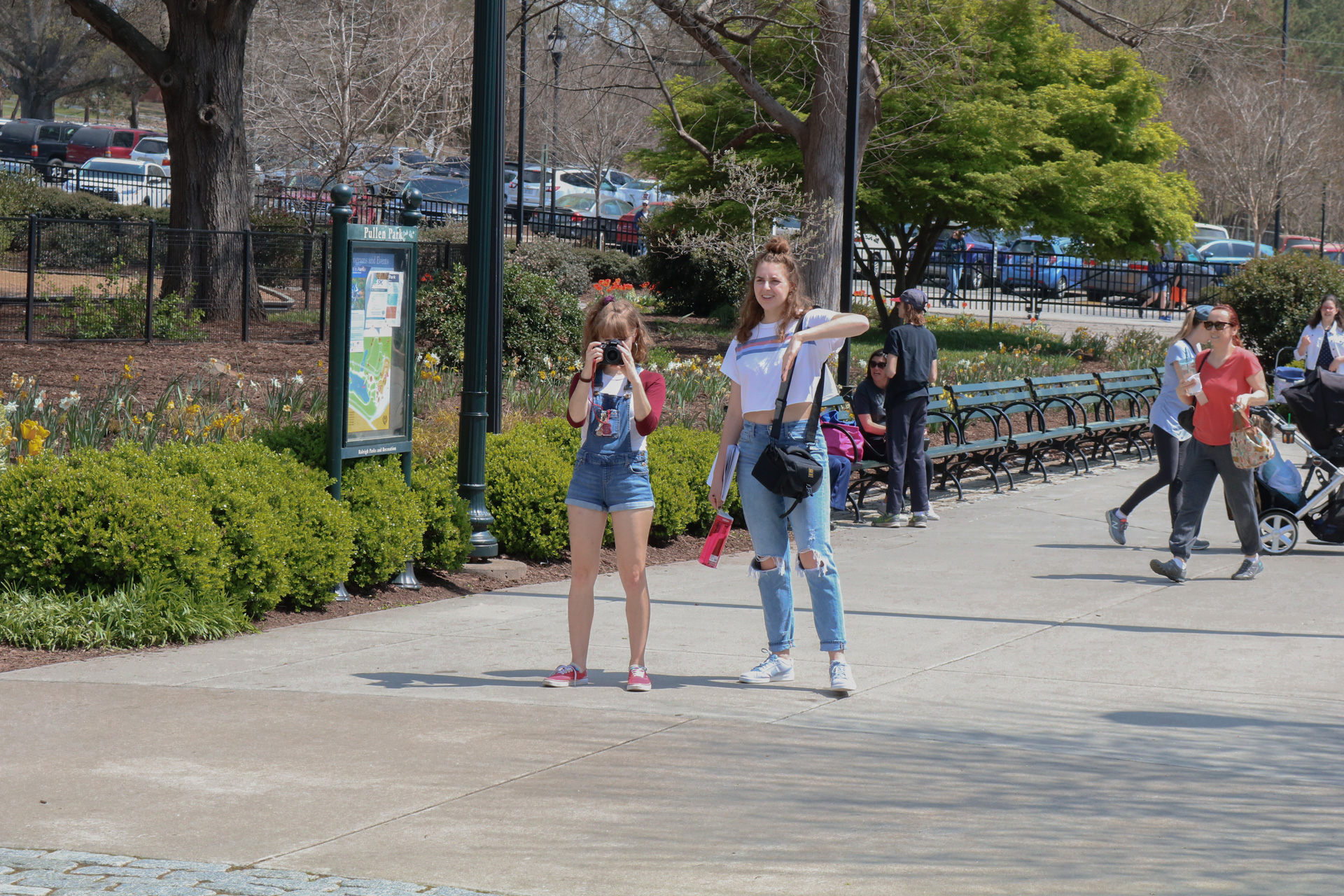
We then created four personas to inform our decisions: Zoe (who is hypersensitive to sound); Zoe’s dad; Ryan (who is hyposensitive to sound); and Jackson (who is typical).
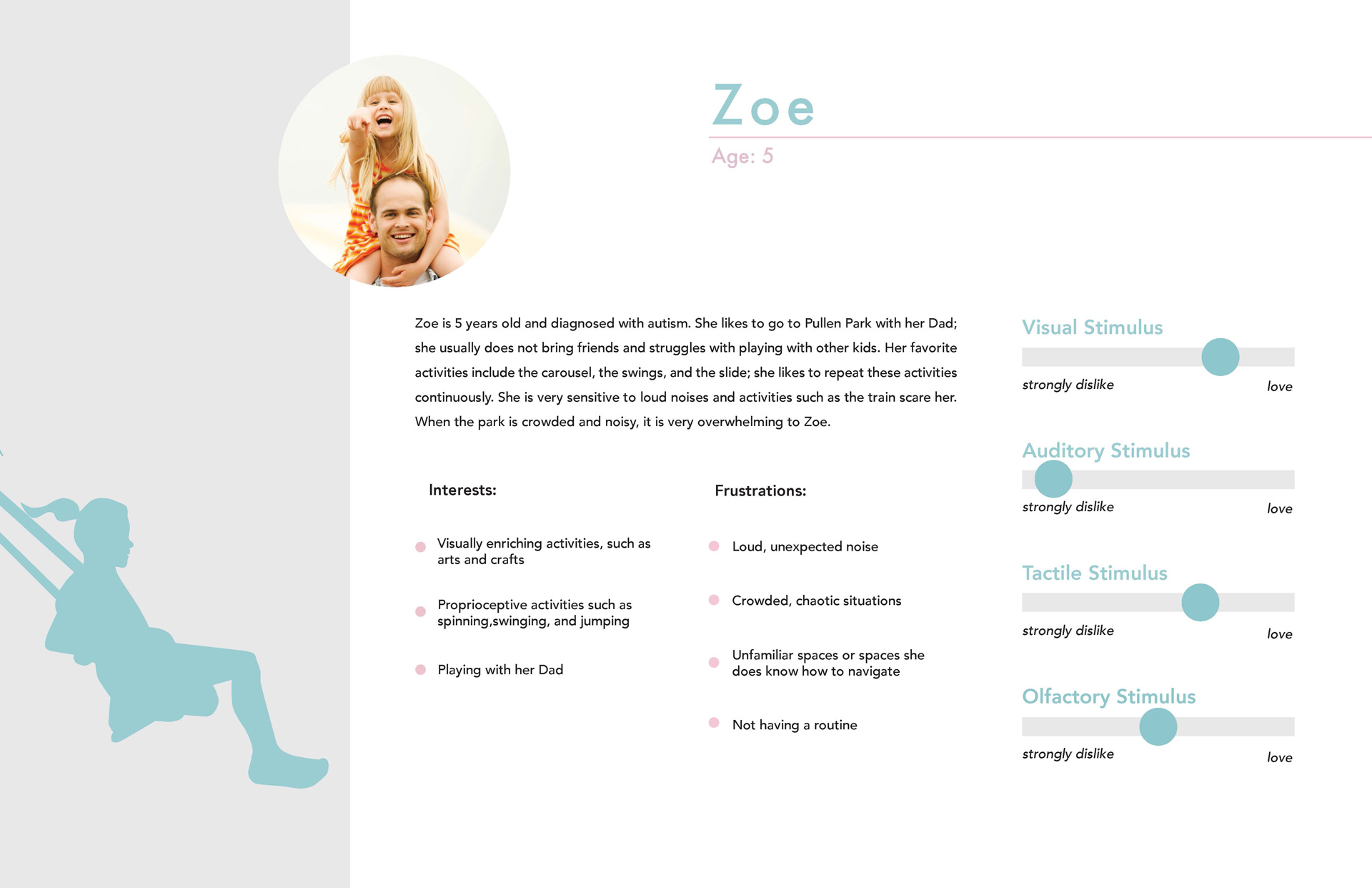
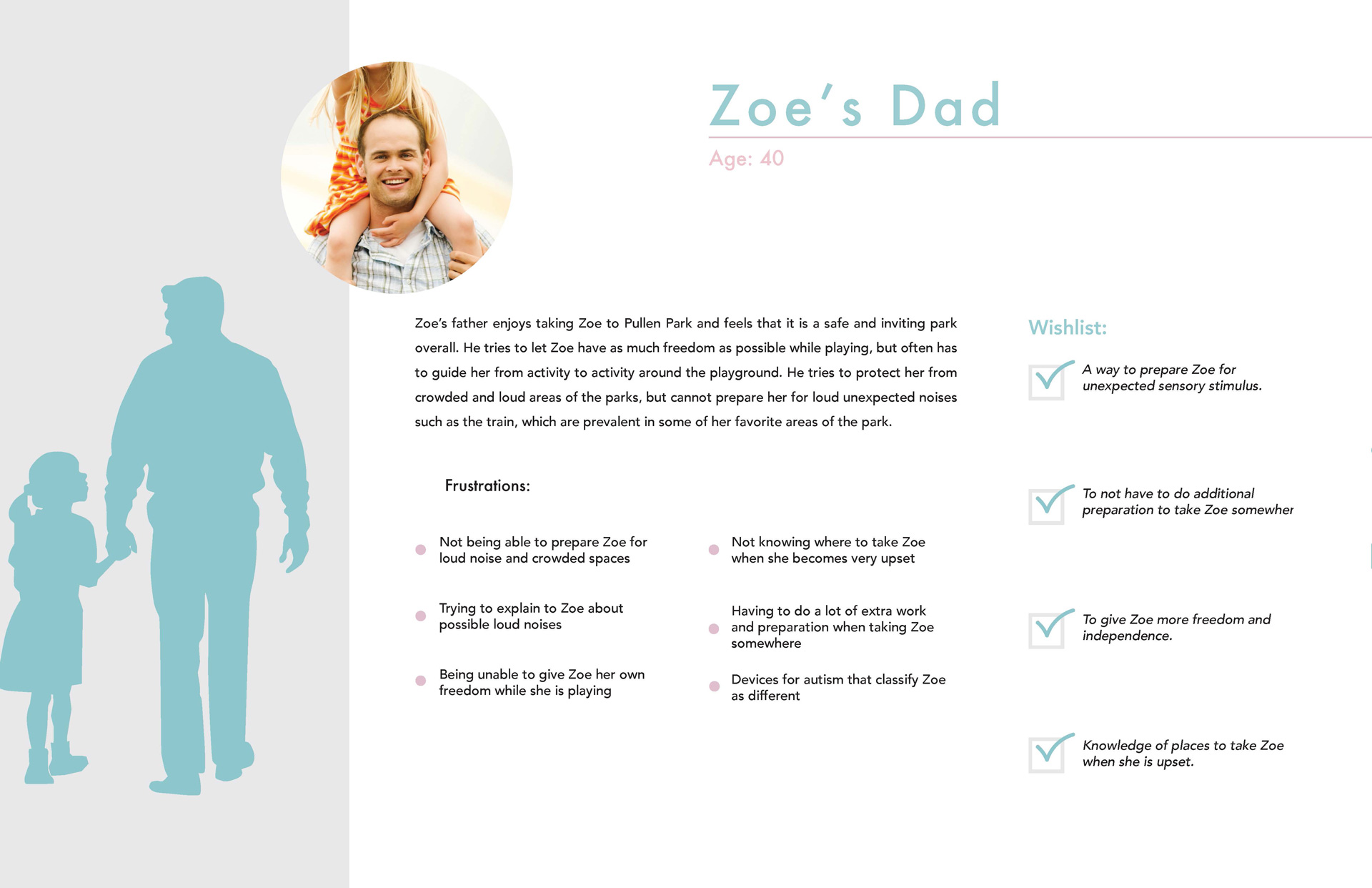

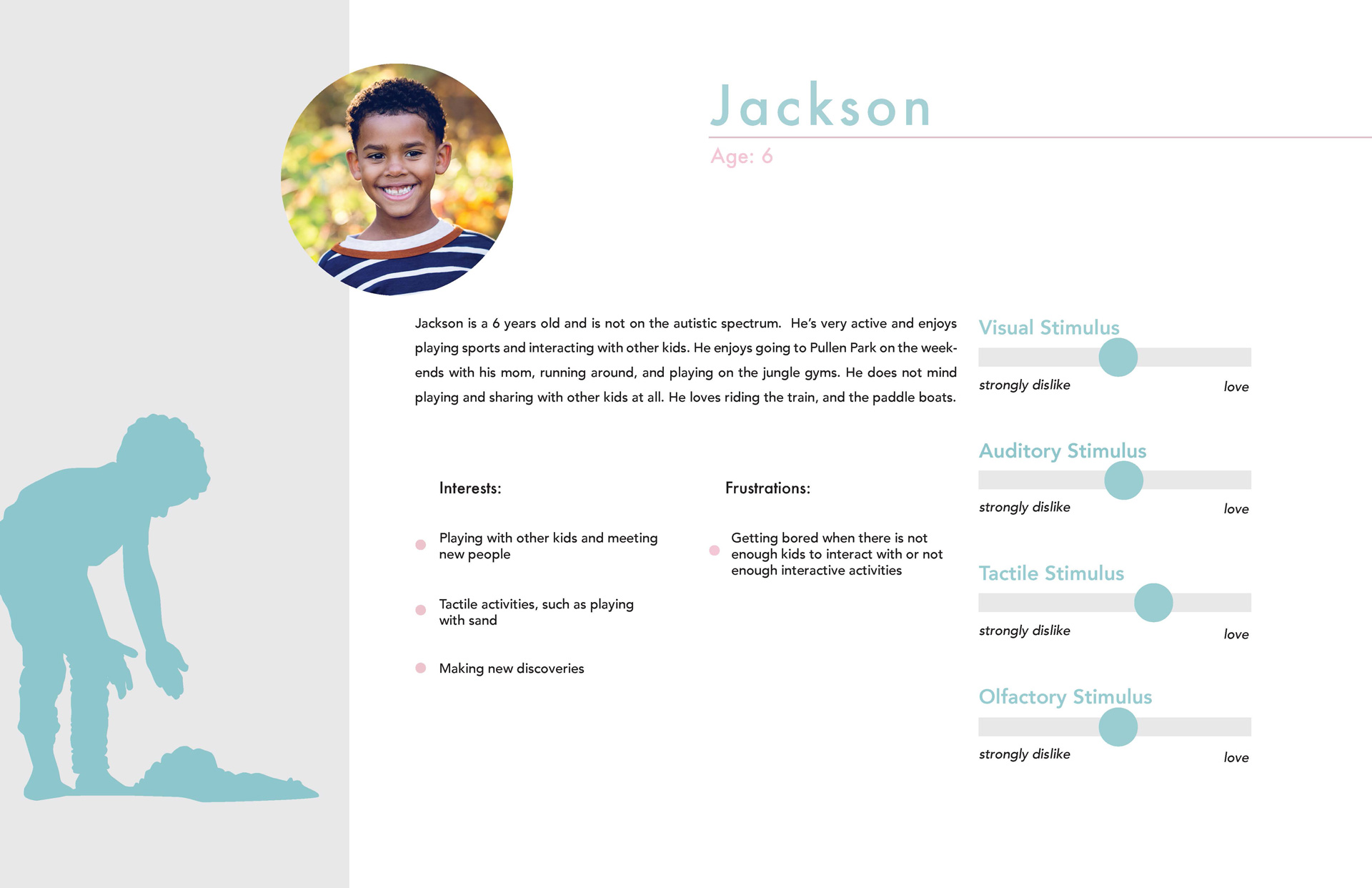


BOOOOP divides Pullen Park into four zones, highlighting the sounds that can be heard within each zone. The colors of the zones correlate to how active each area is, with pink being the most active and purple the least. Additionally, the blue sections of the map represent low-sensory areas where a child can go to destress.
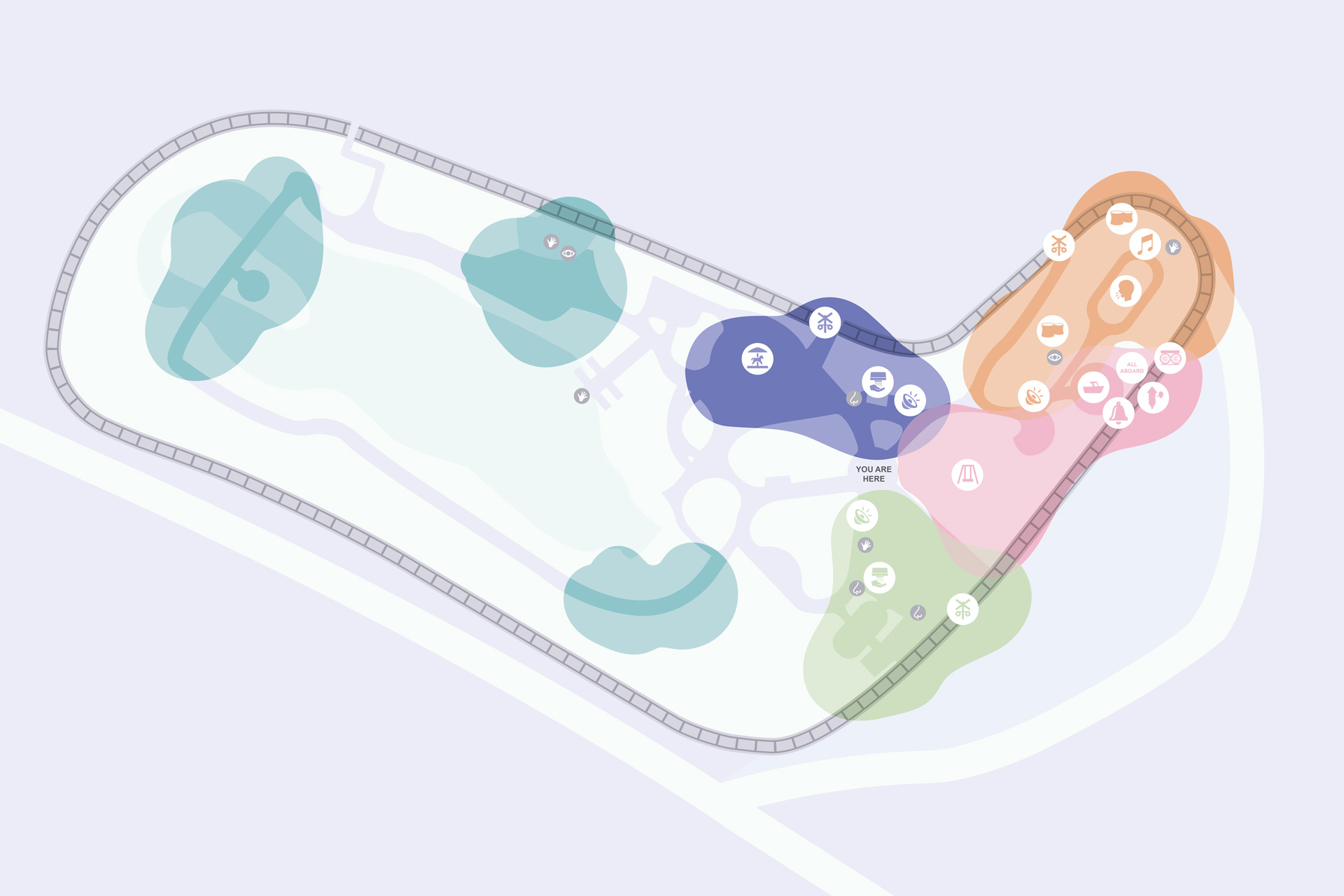

There are four jump stations for each zone in the park. Each jump station has a map of the zone, a jump pad, and a ball. At these stations, a child can jump on the pad, which displays different icons for the sounds within that zone, and hear the sounds for which they correlate.
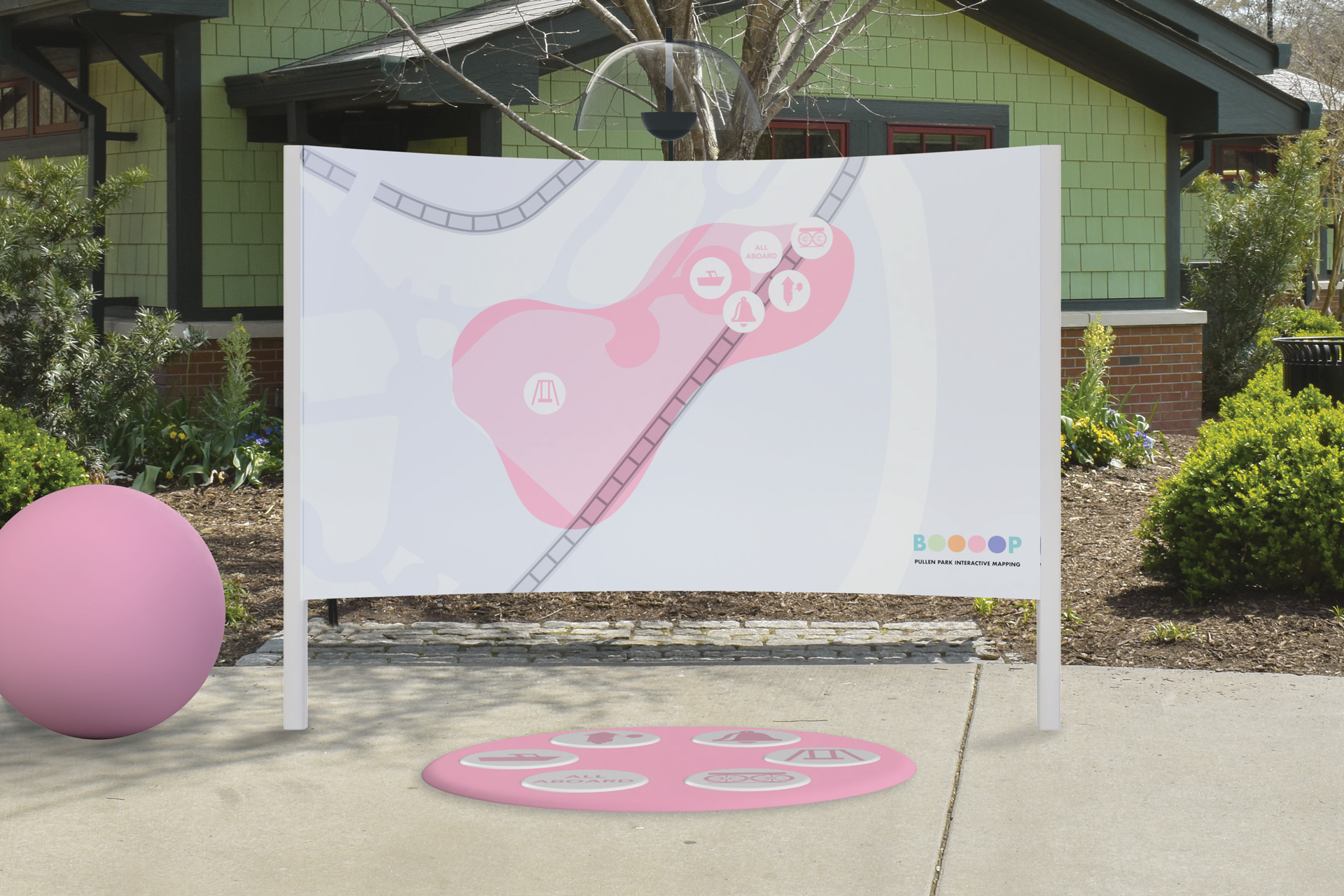
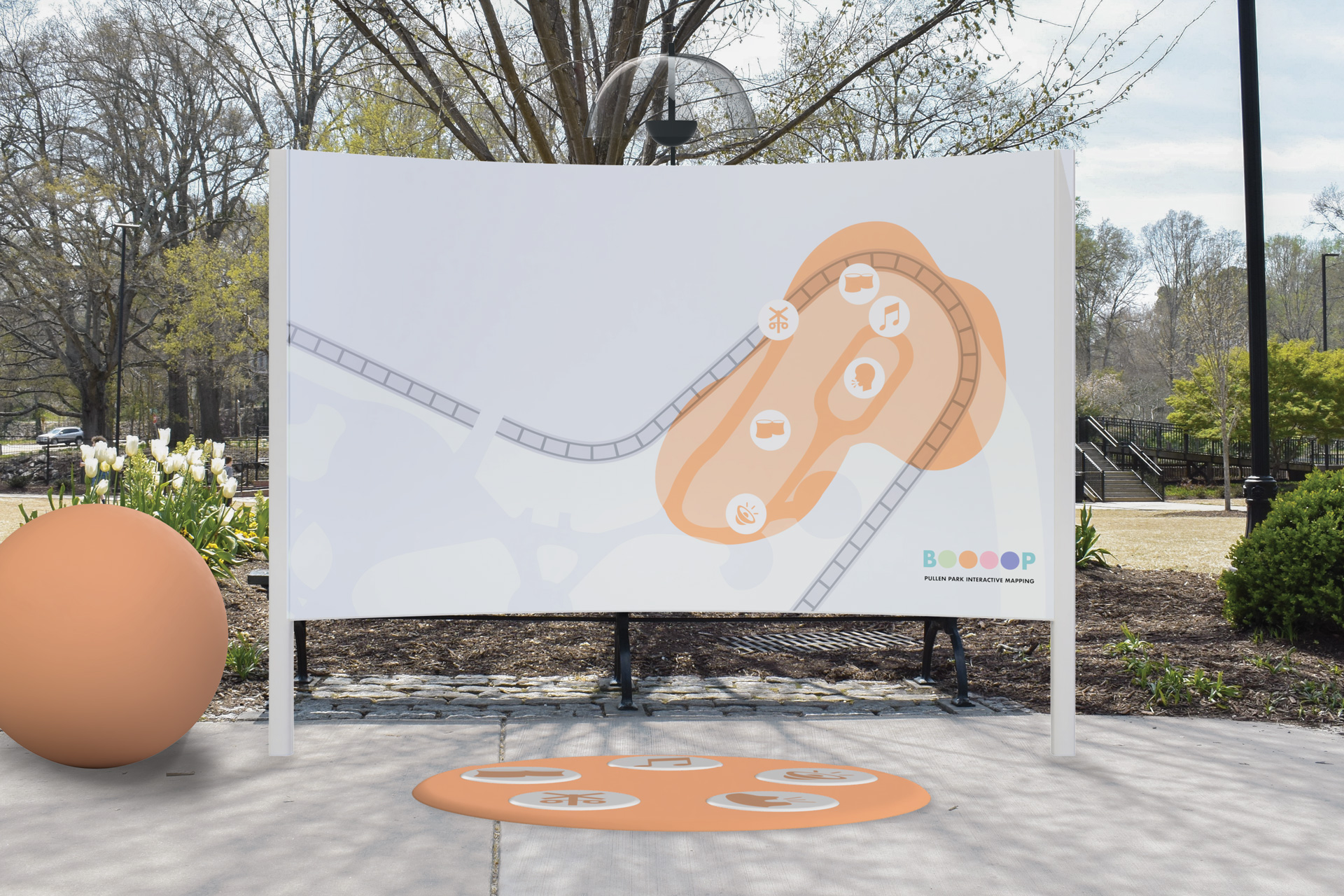
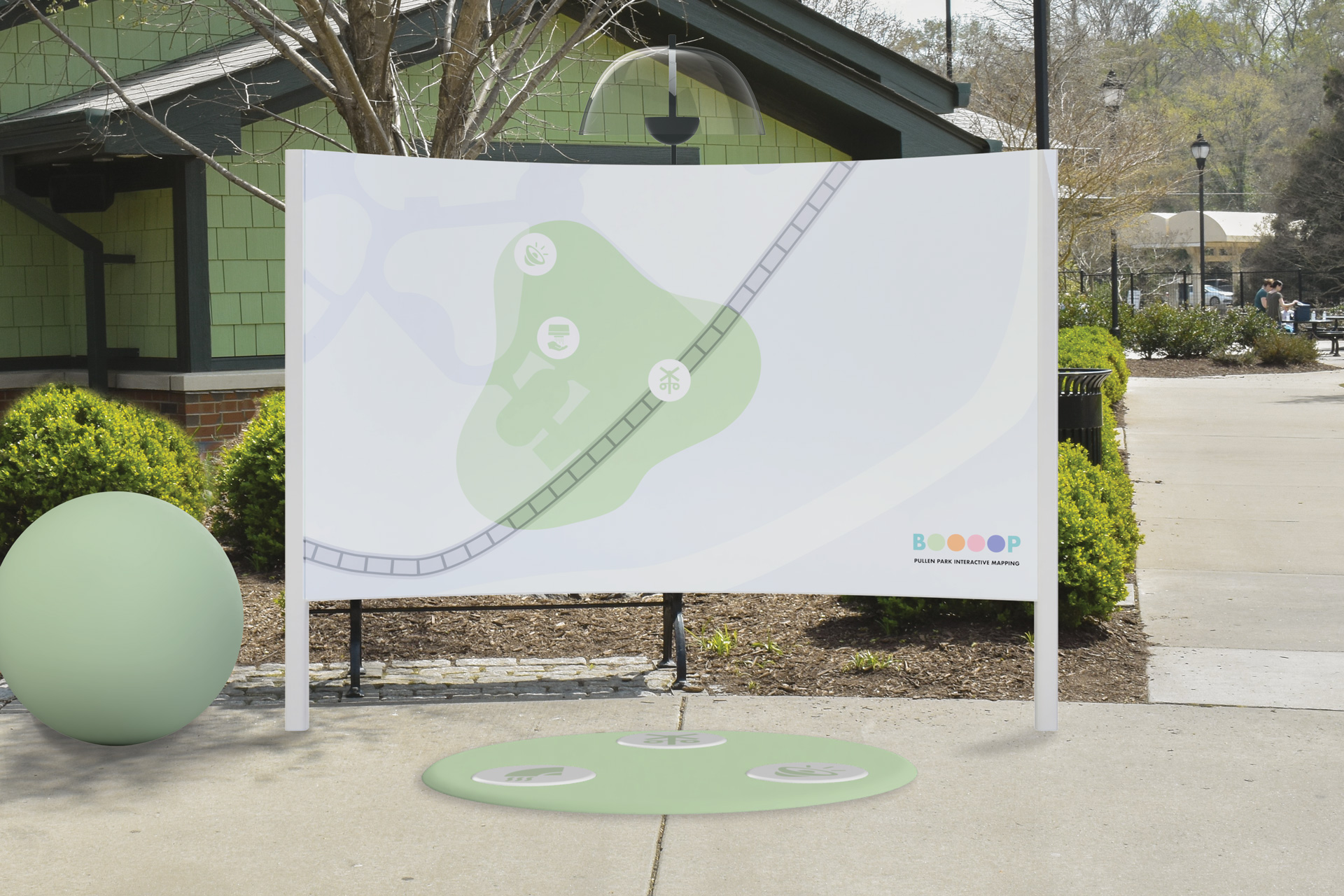

BOOOOP is located at the entrance of Pullen Park, with the map of Pullen Park in the center and the jump stations positioned around it. Each station is located in relation to it’s zone’s location in the park.
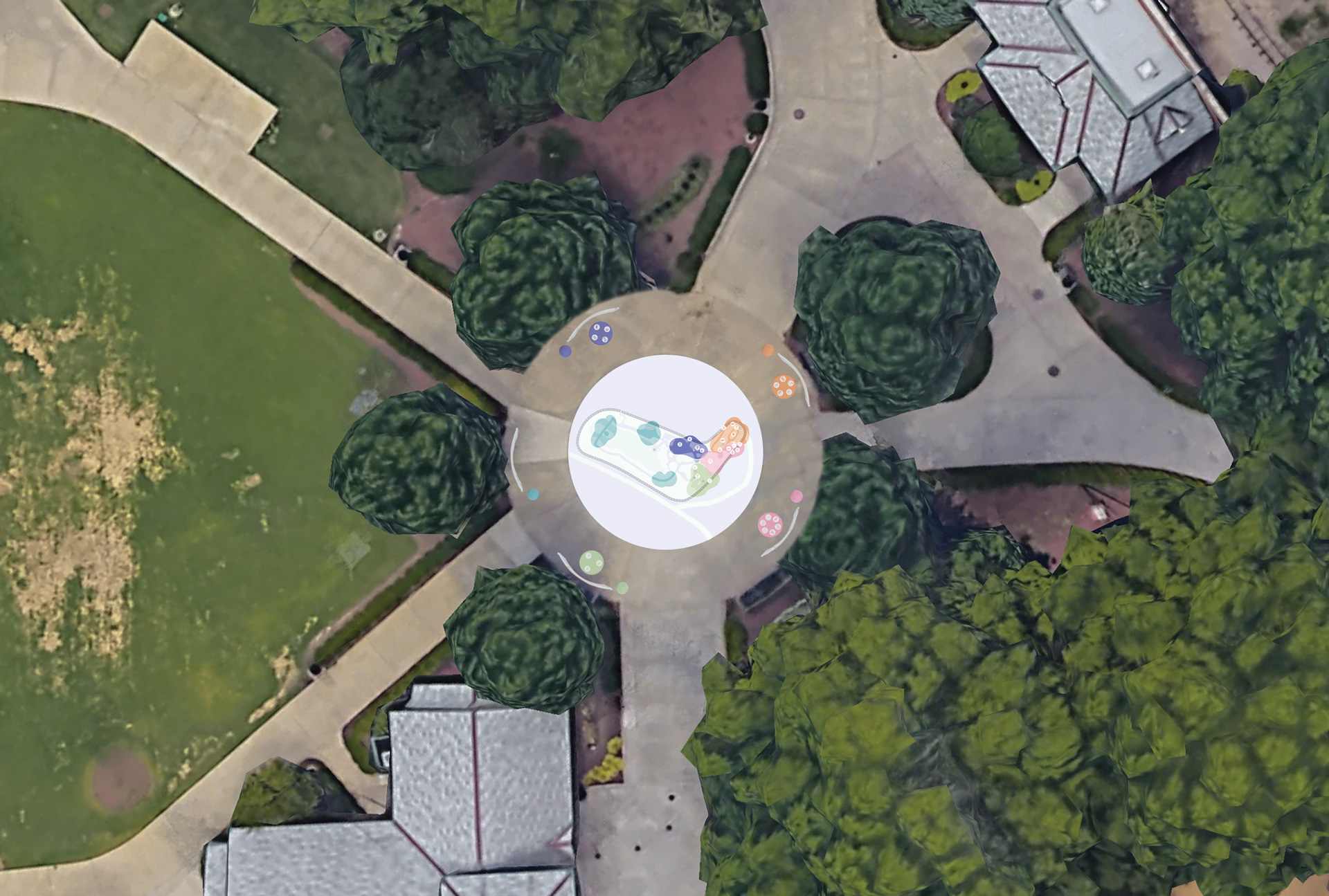
There are two additional entrances to the park besides the main one. At these entrances, there would be a map of Pullen Park, along with brief instructions on what BOOOOP is and where visitors can go to interact with it.
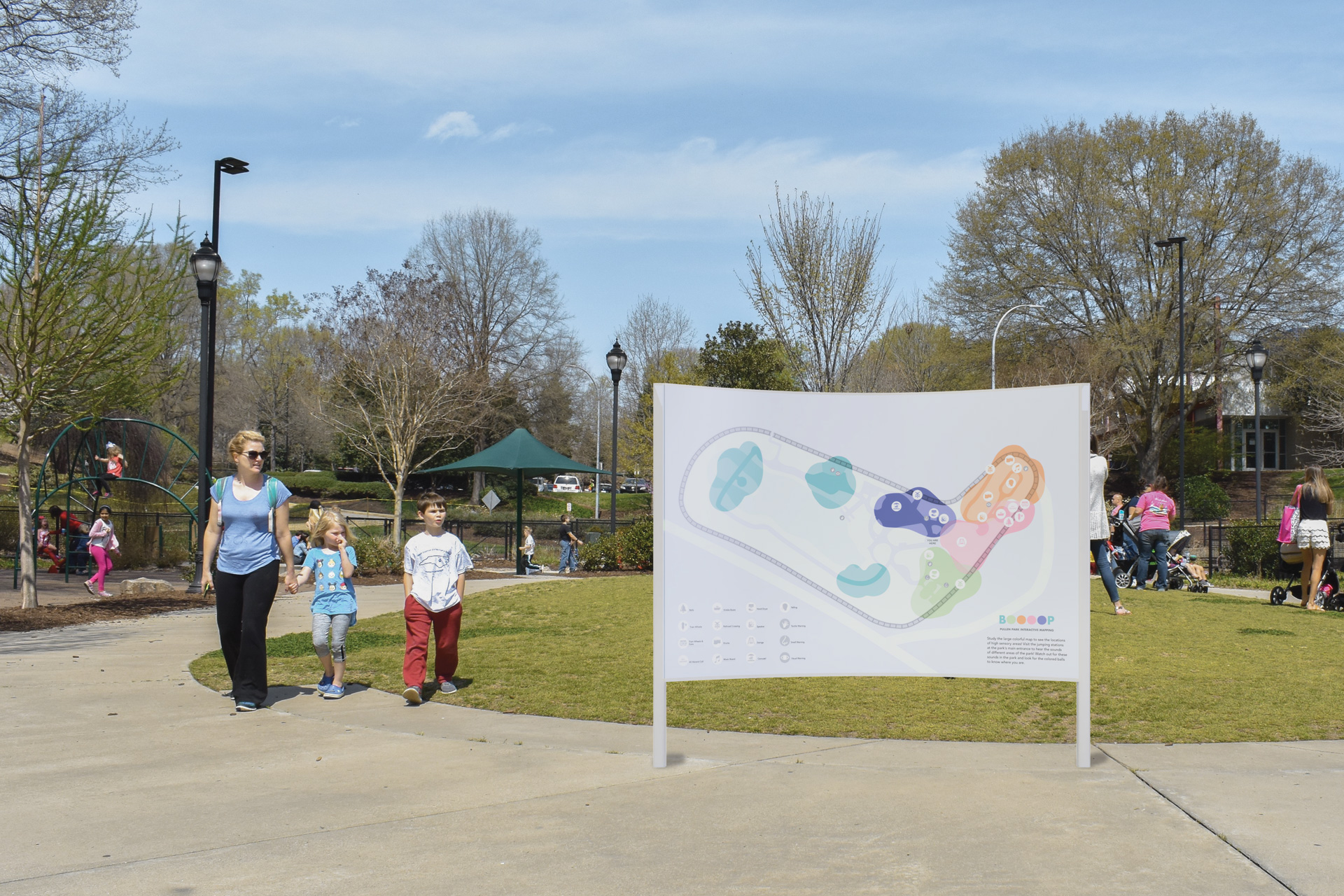

It is common for children with autism to get distracted and overwhelmed easily, so each jump station is designed to reduce outside sensory input. Each map is 7 ft x 5 ft to block the majority of the park from the child while he/she engages with BOOOOP. The board also curves around the child to further reduce distractions and give the child a sense of safety and comfort.
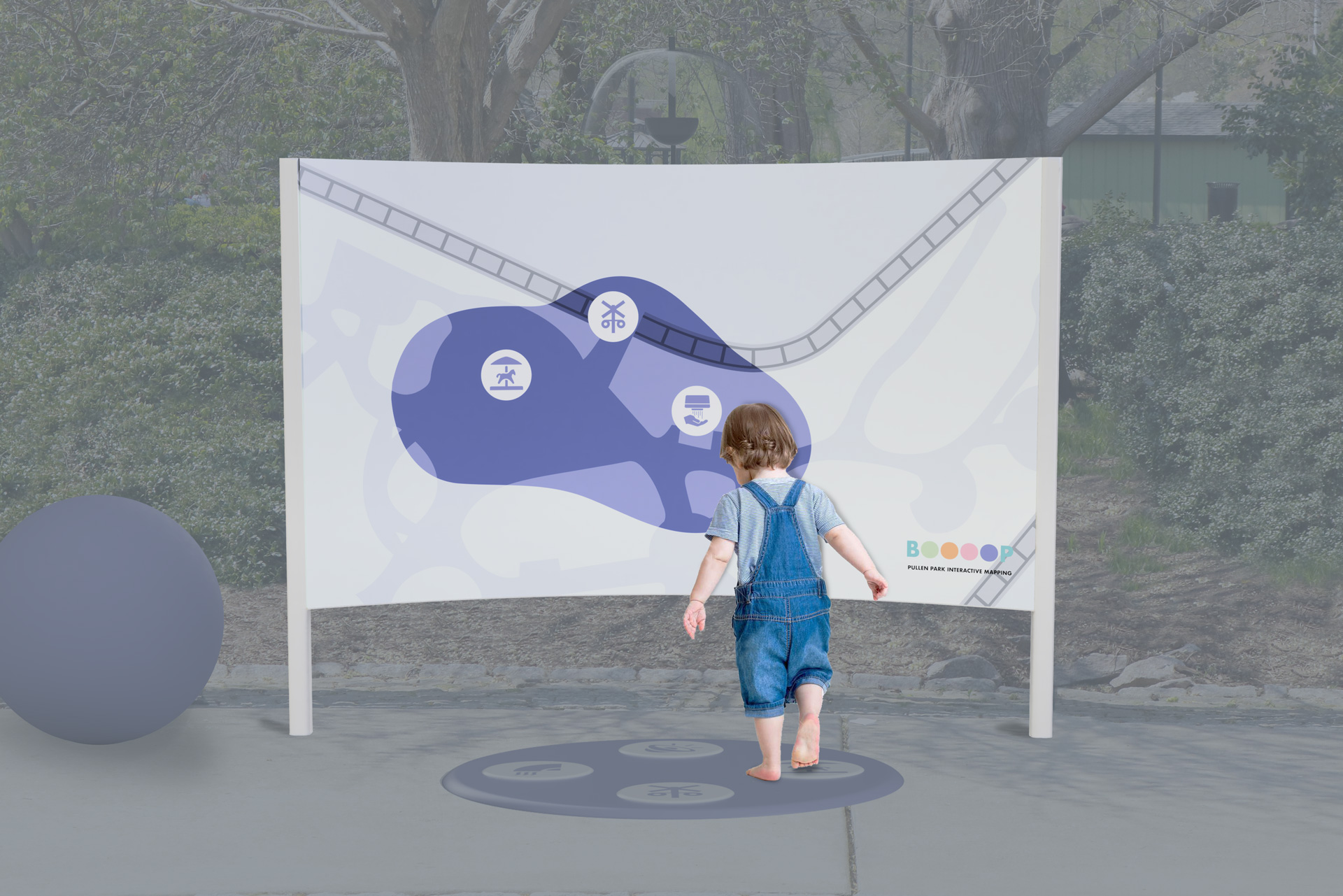
When a child jumps on an icon on the jump pad, he/she will hear the sound for which that icon correlates. For example, if a child jumps on the icon of the train whistle, he/she will hear the train whistle. Additionally, when the child jumps on the icon, the corresponding icon will light up on the map, letting the child know what sound they are hearing and where they will hear it in the park.
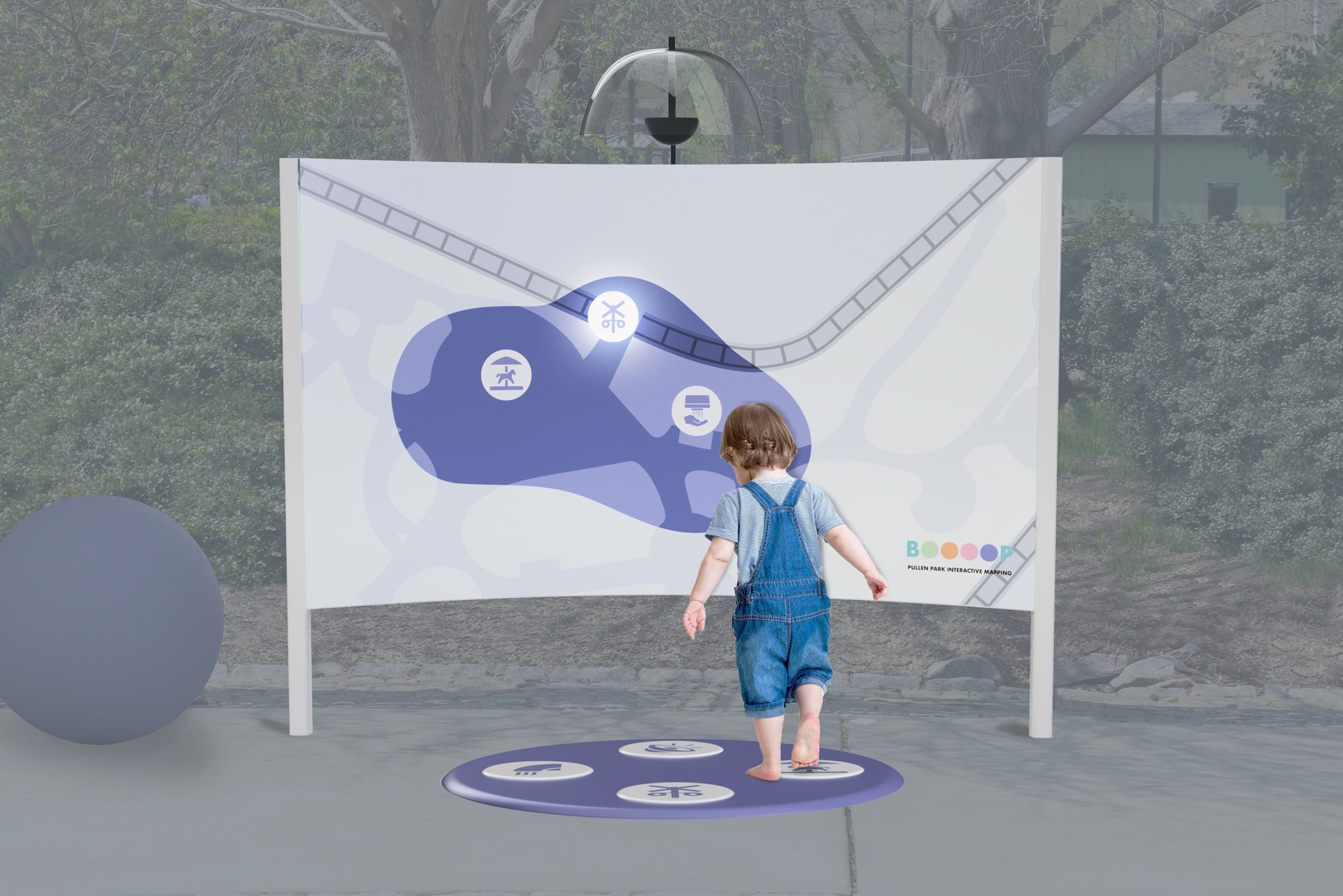
We didn’t want a child with autism to become overwhelmed by the sounds of other kids interacting with BOOOOP, so we placed parabolic speakers at the top of each map to filter the sound so it could only be heard from directly beneath the speaker. That way, children in the area won’t be able to hear the sounds another child is making, only their own.

At each jump station, there’s a colored ball that correlates with the color of the zone. These balls are located throughout the park to help children identify and remember what zone they are in and what sounds they will hear there. They also serve as a playful addition to the park, allowing children to climb and interact with them.
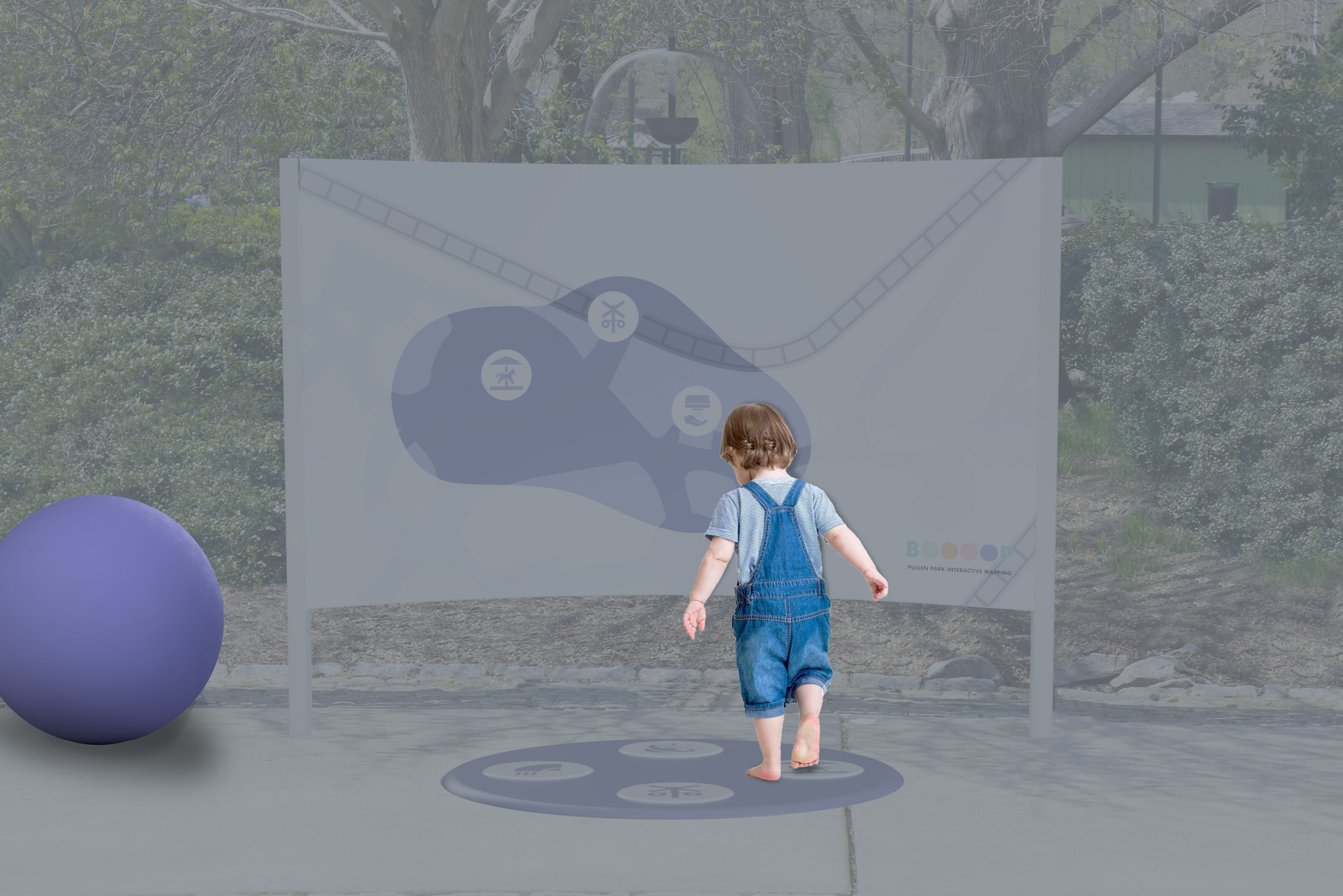
Where the colored balls would be located within each zone along with images of the balls in context.
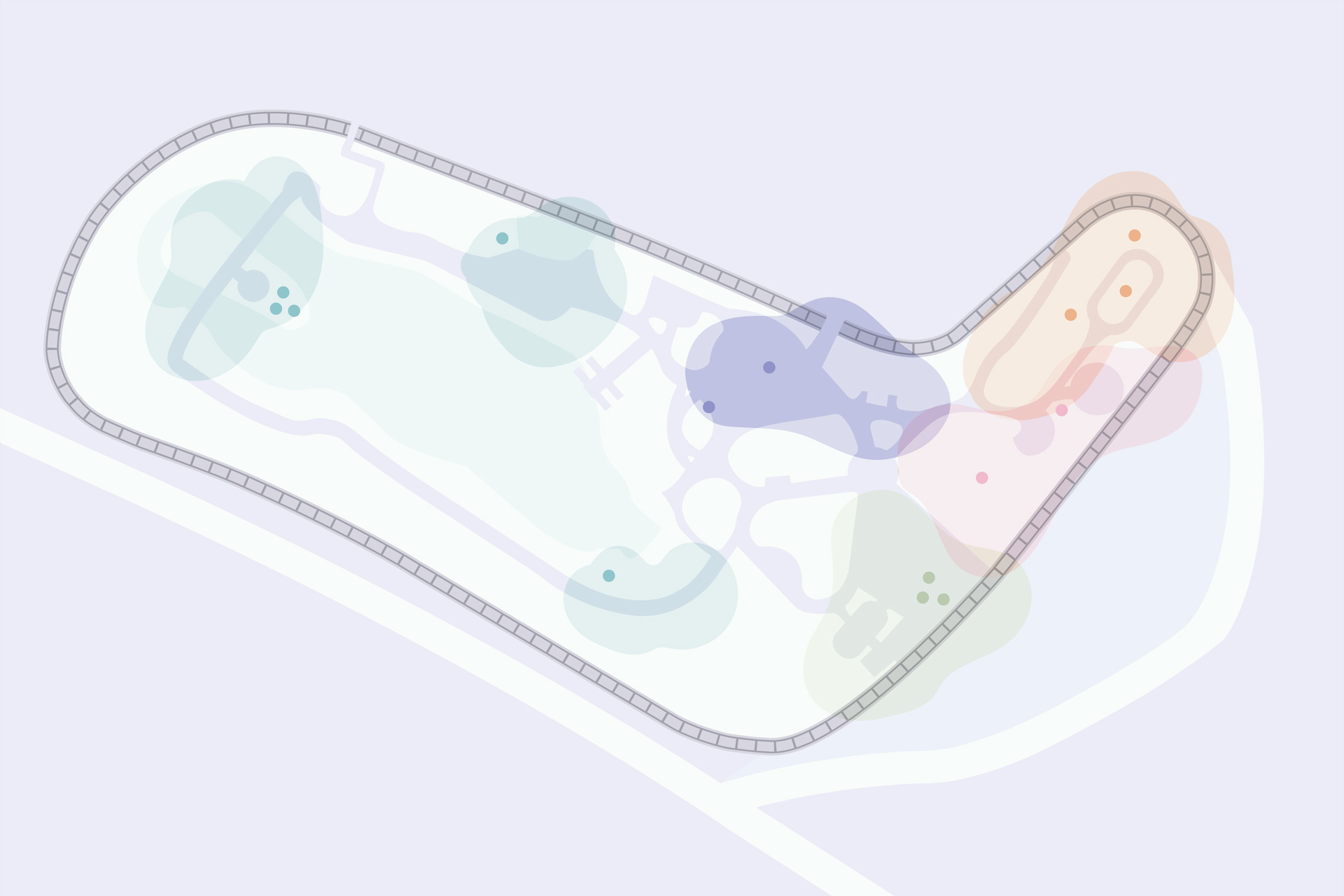
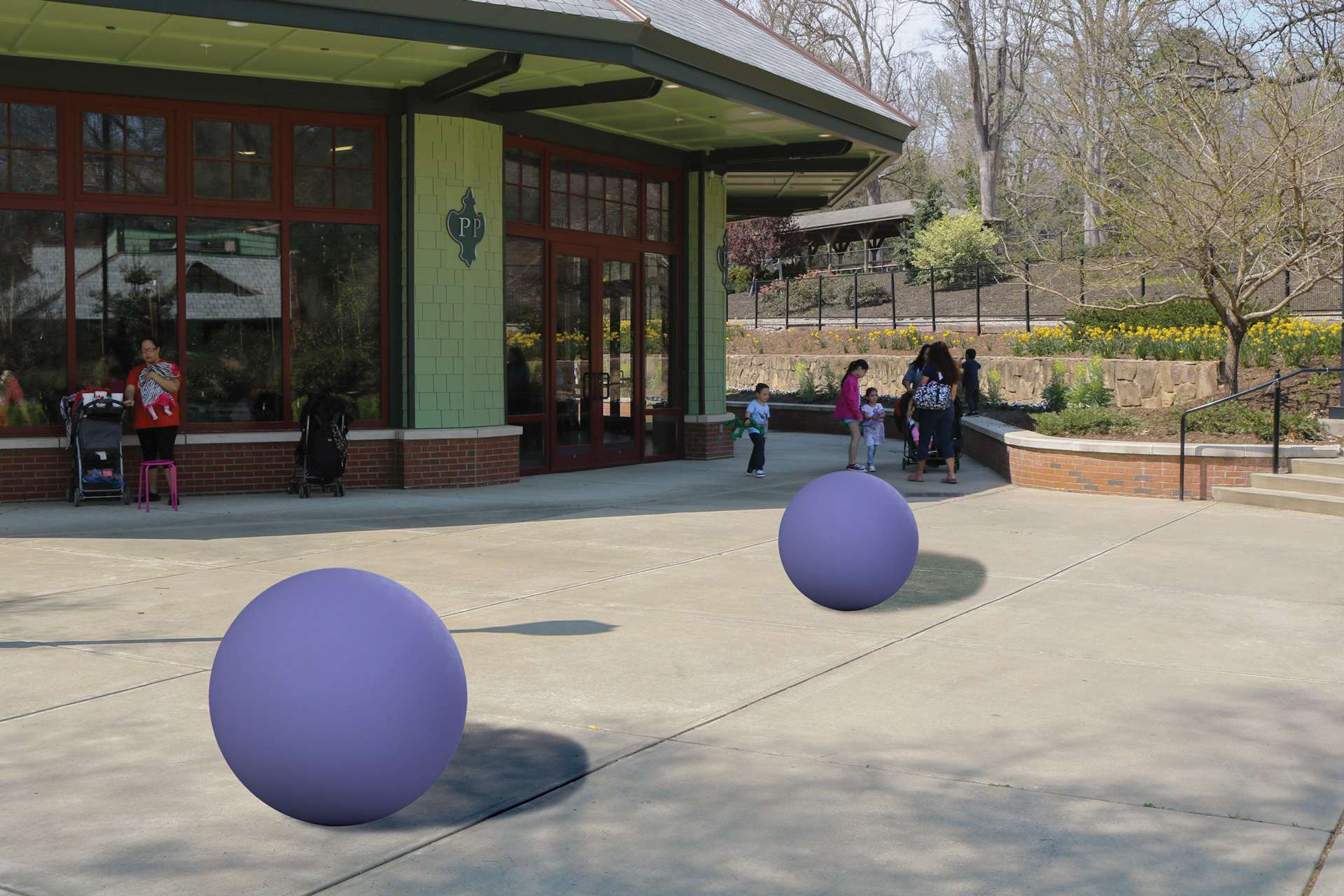

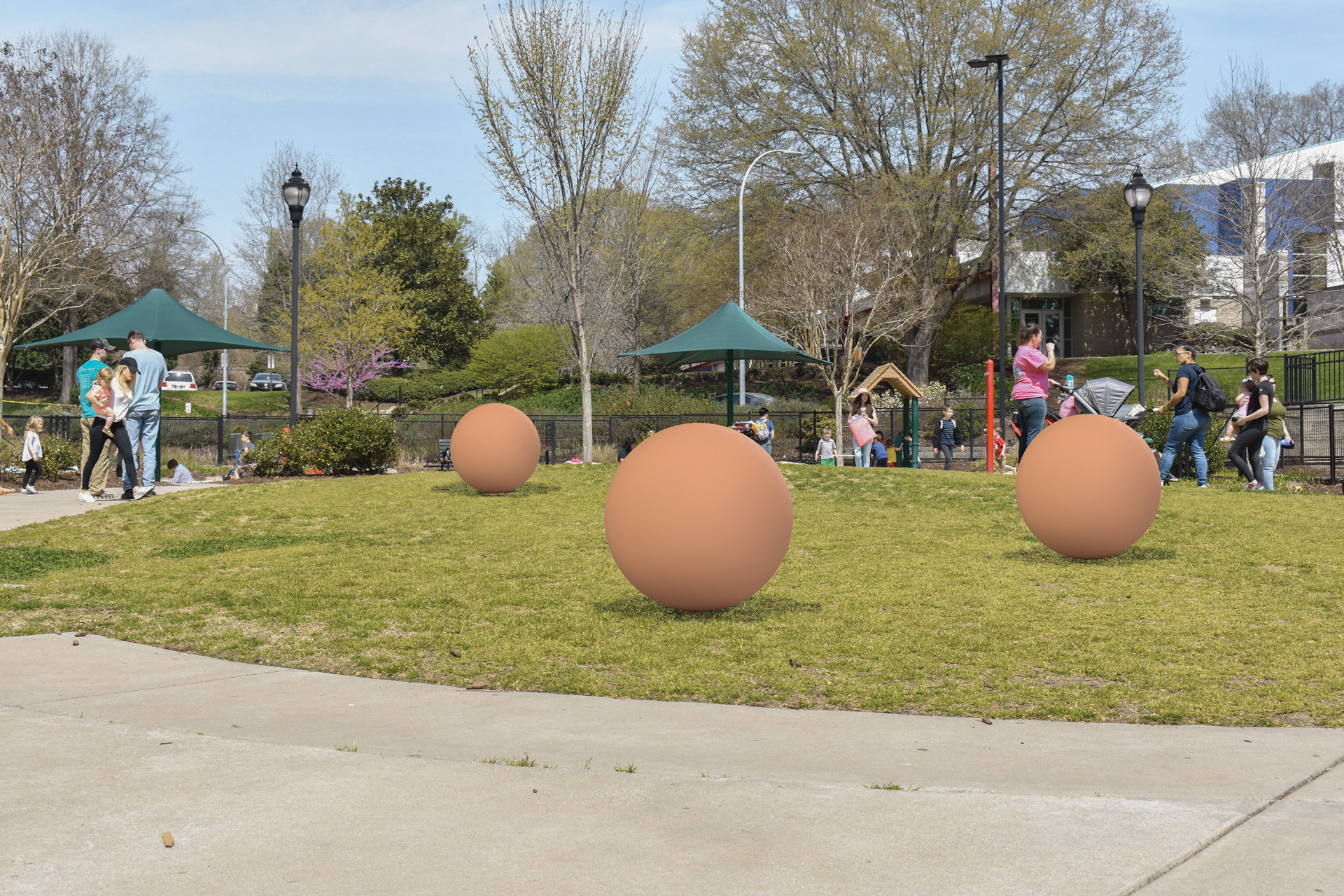
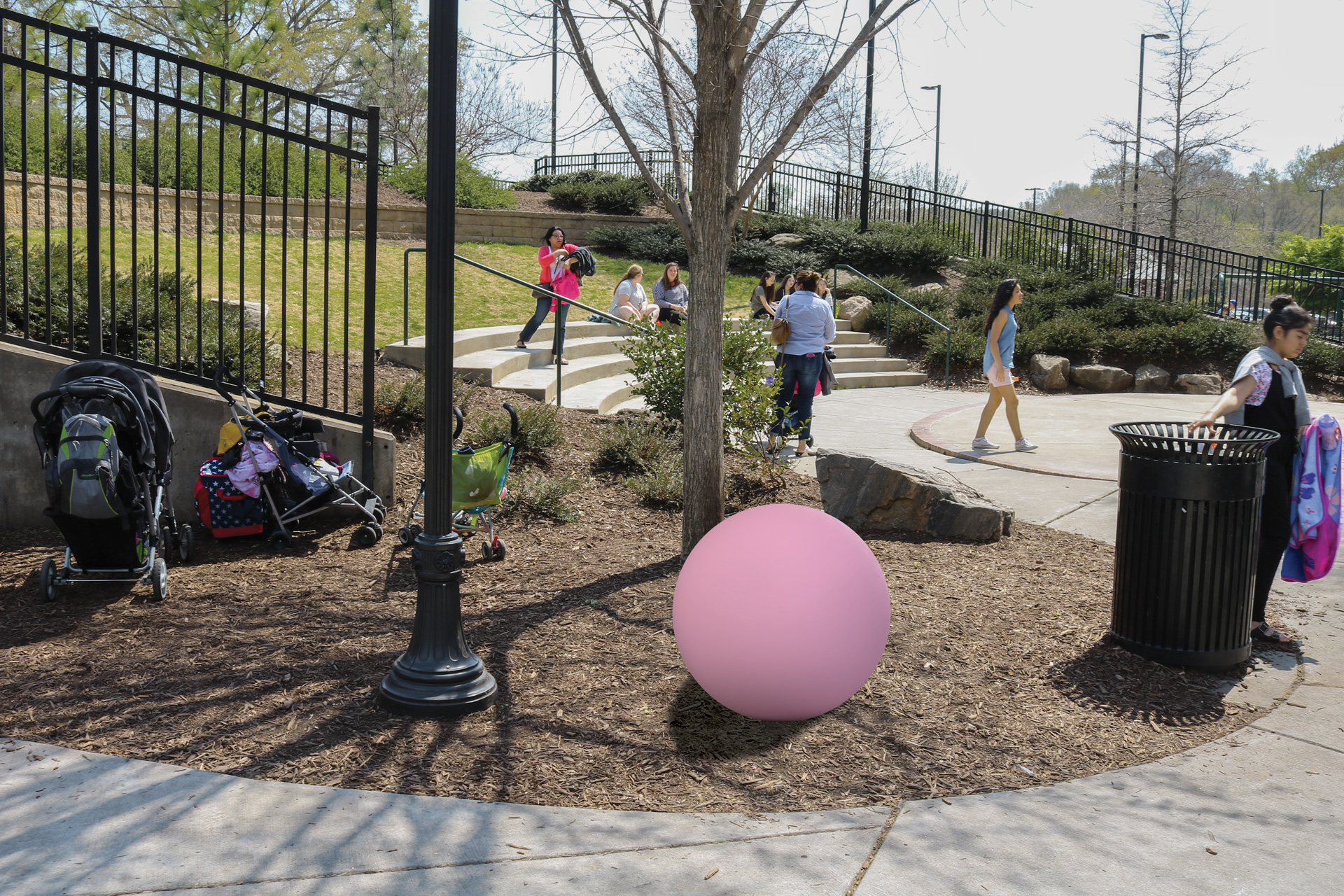
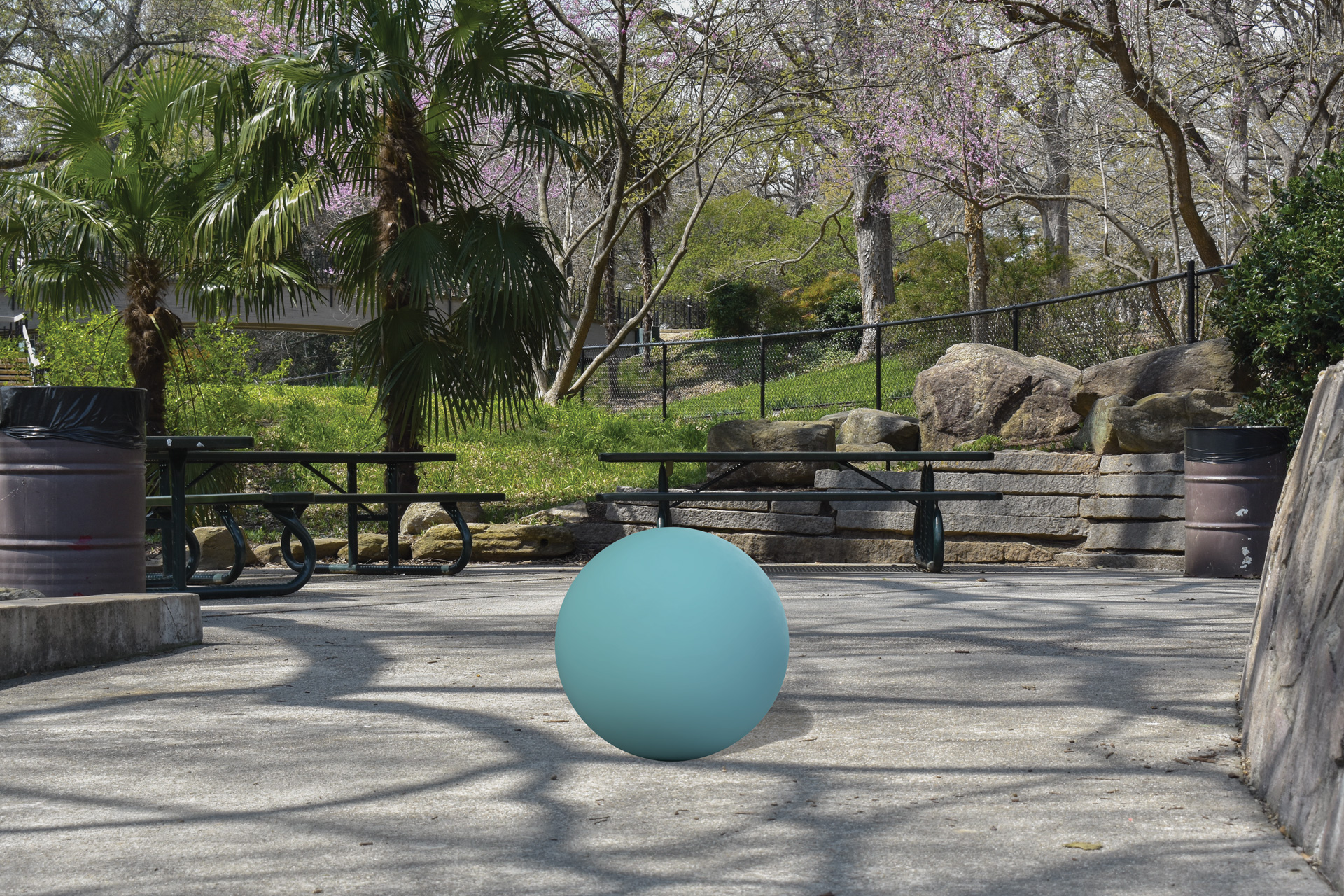
If children get overwhelmed while at the park, we wanted to inform them of areas they could go to de-stress. The calm station (located among the other jump stations) highlights three areas of the park where children can go to de-stress. These areas are located near water and are separated from the majority of activities at the park.

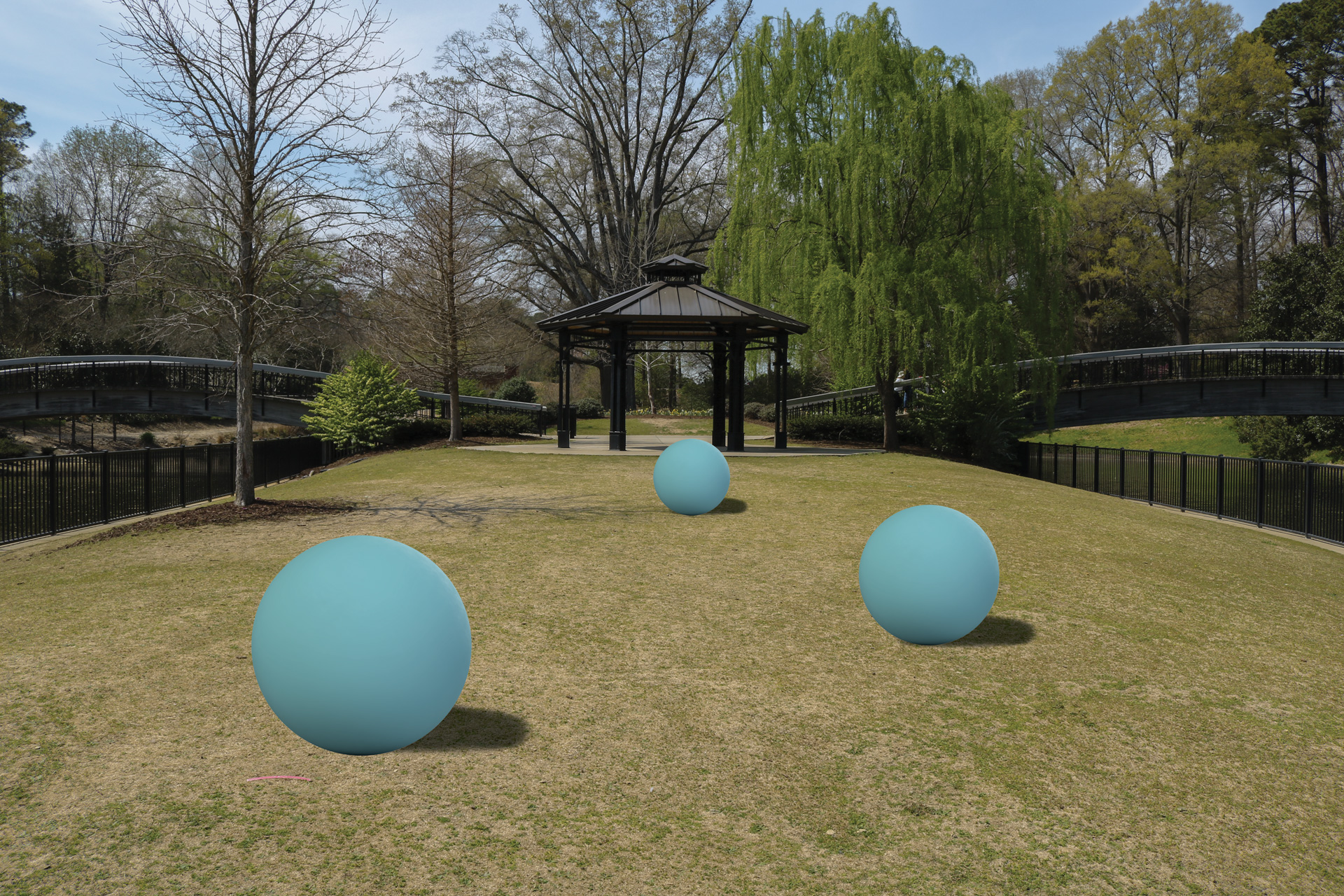
Task analyses for our four personas, illustrating how children with different sensory sensitivities can interact with BOOOOP. For Zoe, we have illustrated a good and bad day, showing how BOOOOP can be beneficial in both situations.

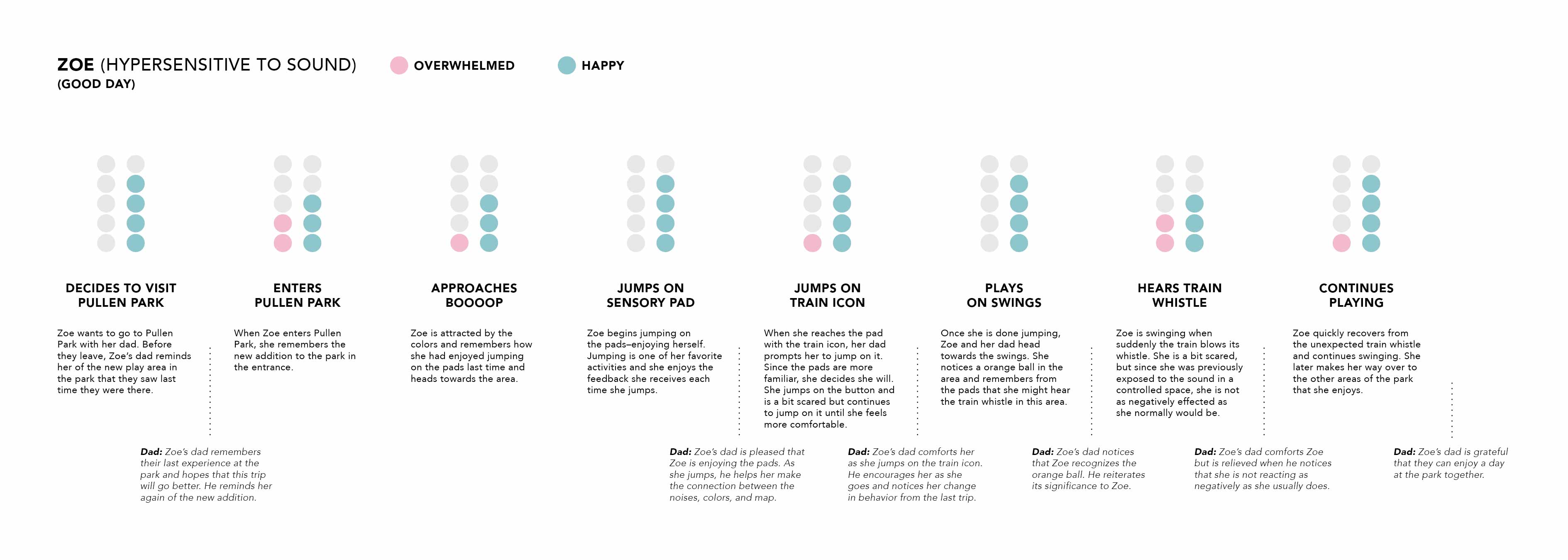
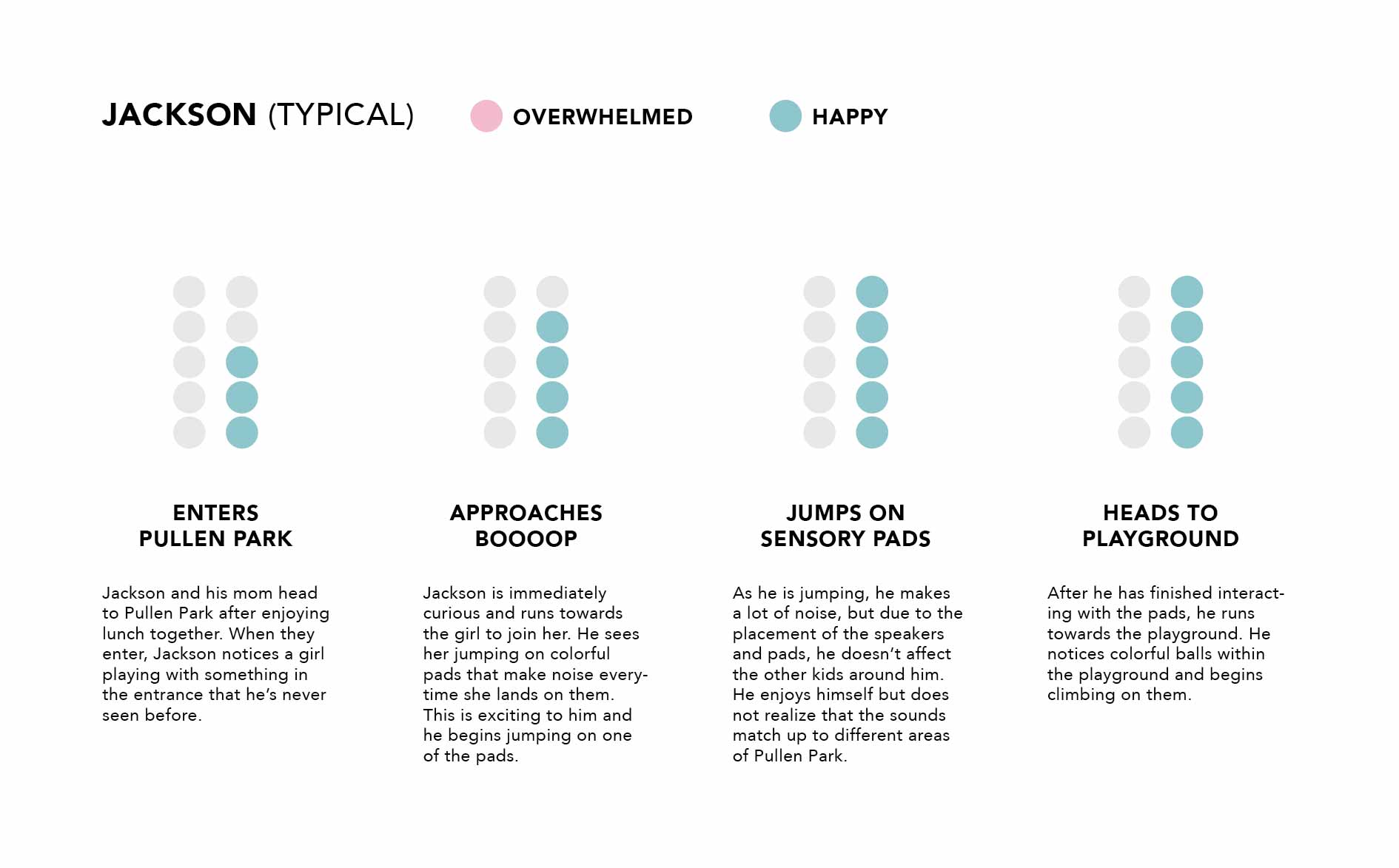

Video documenting the negative experiences a child with autism has at the park, as well as how BOOOOP can be used to improve these experiences.
